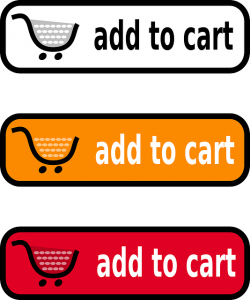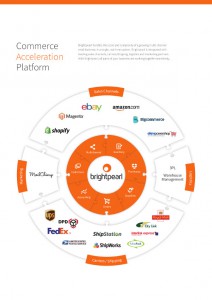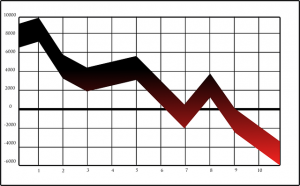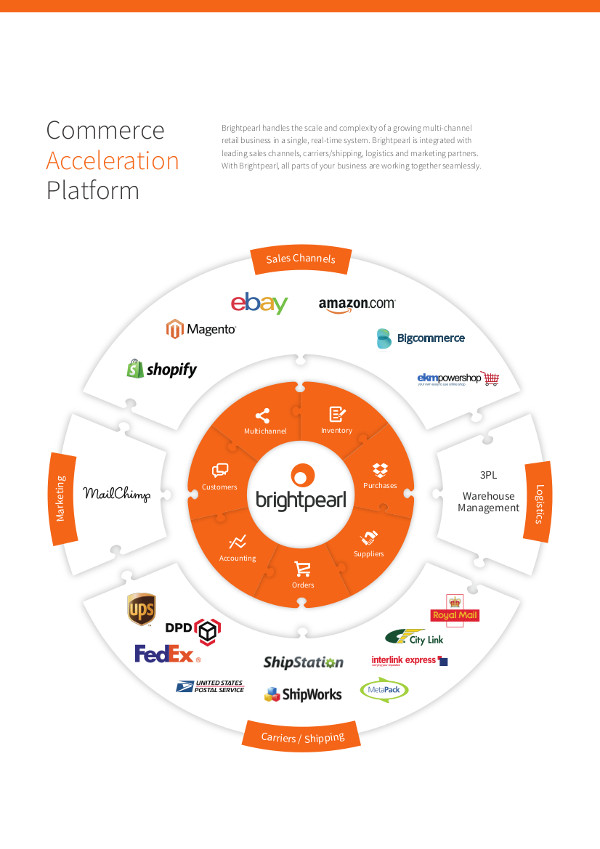Imagine a successful web-store owner, perhaps a traditional bricks-and-mortar retailer doing well with their standalone eCommerce site. Imagine that same retailer wanting to expand their operation in to multiple stores, an additional stock-holding location, and going on to sell through multiple channels online e.g. through Amazon or Ebay.
Does this scenario sound familiar to you? Does it sound Utopian, but are afraid of the complexity and operational challenges?
The Fear Factor
 The fear factor arises when anticipating that each of these challenges needs a new system, a significant project, large investment, and difficult-to-manage technical people? Will these stretch your existing operation – the time spent managing stock across these sales channels or stock locations, how to manage purchasing into these locations – how to deal with the technicalities of collating data?
The fear factor arises when anticipating that each of these challenges needs a new system, a significant project, large investment, and difficult-to-manage technical people? Will these stretch your existing operation – the time spent managing stock across these sales channels or stock locations, how to manage purchasing into these locations – how to deal with the technicalities of collating data?
However, with a little knowledge of modern ERP systems the fear can melt way. The Brightpearl system, for example, will work really well in the scenario above: one system handling all sales channels, stock control, CRM, and finances across the board.
So here are the questions to ask yourself; when a handful of these apply to you, then it’s time…and it’s better to put the foundations in early, so that when you ask yourself the next question the answer is already in hand.
Can I reliably control my stock over several different sales channels?
 One of the major fears around going multi-channel is the opportunity for over-selling the same stock in different market-places, i.e. having to dash to alter that eBay listing because the last unit has gone off the shelf. If you fear an operational nightmare, there really is no need to worry.
One of the major fears around going multi-channel is the opportunity for over-selling the same stock in different market-places, i.e. having to dash to alter that eBay listing because the last unit has gone off the shelf. If you fear an operational nightmare, there really is no need to worry.
Brightpearl can handle stock management across multiple webstores (optimised for BigCommerce, Magento, Shopify to name the principal players, others are available) – and Amazon and eBay (multiple accounts of each, if you so desire), and of course your physical sales locations too.
It does this by considering itself the central stock control operation, maintaining a communication with all of these channels whenever a stock quantity changes due to sales on any of the channels. No operational nightmare, no drama, no overselling.
Can I see all my customers in one place?
 The thing about running a webstore is it will invariably collect customers, as will any other sales channel like the eBays and Amazons of this world. Without a central system all of your customers are in different places and there’s either no consolidated view of them all; or perhaps you’re having to work very hard to collate them!
The thing about running a webstore is it will invariably collect customers, as will any other sales channel like the eBays and Amazons of this world. Without a central system all of your customers are in different places and there’s either no consolidated view of them all; or perhaps you’re having to work very hard to collate them!
Imagine a world where all of your customer records came down into a central location, could be tagged as to their lead source, or areas of product interest, and then punched out en-masse in to your e-marketing system – Mailchimp perhaps?
Are my sales / product catalogue / purchasing / marketing / accounts data are all in the same place?
 Extrapolate the question about customers to all types of business data. Suppliers, products, sales reporting, book-keeping. Imagine the efforts to go to if you went multi-channel without something managing it – imagine the complexity of the spreadsheets!
Extrapolate the question about customers to all types of business data. Suppliers, products, sales reporting, book-keeping. Imagine the efforts to go to if you went multi-channel without something managing it – imagine the complexity of the spreadsheets!
It’s the fear of the imagined complexity that holds customers back, but really with a single consolidated system, think of all the data that doesn’t have to move around between systems, or be copied and pasted from here to there.
Your books know about your sales, your balance sheets shows your stock position right now, your CRM records are up to date, your supplier records sit right next to your low-stock report… sound good?
Wouldn’t it be good to have my Accounts integrated into my stock and sales systems?
 Yes, it would. But a step towards this might be to implement the centralised stock management and sales aspects into a single system first, but stick with your existing accounts package (until year end). At that point it’s a matter of a regular export to your offline accounts package. At least you’d be only exporting from one place.
Yes, it would. But a step towards this might be to implement the centralised stock management and sales aspects into a single system first, but stick with your existing accounts package (until year end). At that point it’s a matter of a regular export to your offline accounts package. At least you’d be only exporting from one place.
ERP systems will generally want to look after your books too, but it can be a step-change, perhaps dissolving a little more of the fear-factor around up-rating systems. Moving toward nirvana piece by piece.
Do I know my profitability by sales channel, by month, by day, by customer segment, by product? Right now? To the minute?
 If the answer is Yes, then congratulations – but think of the operational effort required to achieve it, think of the technical complexity of collating all the information, how much of your or your staff’s time is taken up achieving it?
If the answer is Yes, then congratulations – but think of the operational effort required to achieve it, think of the technical complexity of collating all the information, how much of your or your staff’s time is taken up achieving it?
With a centralised system looking after the whole shooting match, then a “Yes” is at the click of a few links.
Growth, not Grind
 For a small retailer (let’s say up to 10 staff, a handful of stock holding-locations, a physical store and a website, a few lines manually managed on eBay or Amazon) looking to ramp up in any of these areas, we’d recommend the Brightpearl system.
For a small retailer (let’s say up to 10 staff, a handful of stock holding-locations, a physical store and a website, a few lines manually managed on eBay or Amazon) looking to ramp up in any of these areas, we’d recommend the Brightpearl system.
Layer5 have Brightpearl systems handling customers selling simultaneously across physical stores, Magento web-stores, Amazon and eBay channels, feeding customers into Mailchimp, making accountants lives easy, allowing business owners think about growth, not grind.
We see it work in real life, every day – we see it free up oodles of time in the areas of purchasing and stock management particularly; so that important (expensive) members of staff can spend their time on driving the business forward rather than keeping it ticking over.
If you keep business ticking over instead of driving it forward because there is a fear of the scale, cost, complexity of such a drive, then you’re fearing the monster in the closet that simply isn’t there – if you do it right.
If you’d like to know more about how how Layer 5 and Brightpearl can work for your business get in touch 0161 850 4545 / enquiries@layer5solutions.com

